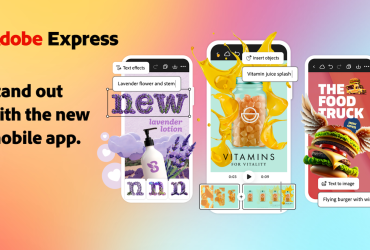What some might not realize, especially in Canada, is that Netflix still offers DVD and Blu-ray shipments through a direct-to-home subscription service in the U.S. The process is simple: select the movies you want and Netflix sends them to you in a prepaid red envelope that’s used for returning the disc as well. There are no due dates or late fees. Pay for a subscription fee, with pricing starting at $9.99/mo. depending on the number of monthly rentals you want. When you want a new movie, send the old one back. It’s a simple, albeit antiquated process. But soon, that service will be part of history.
No More DVD and Blu-rays in Red Envelopes
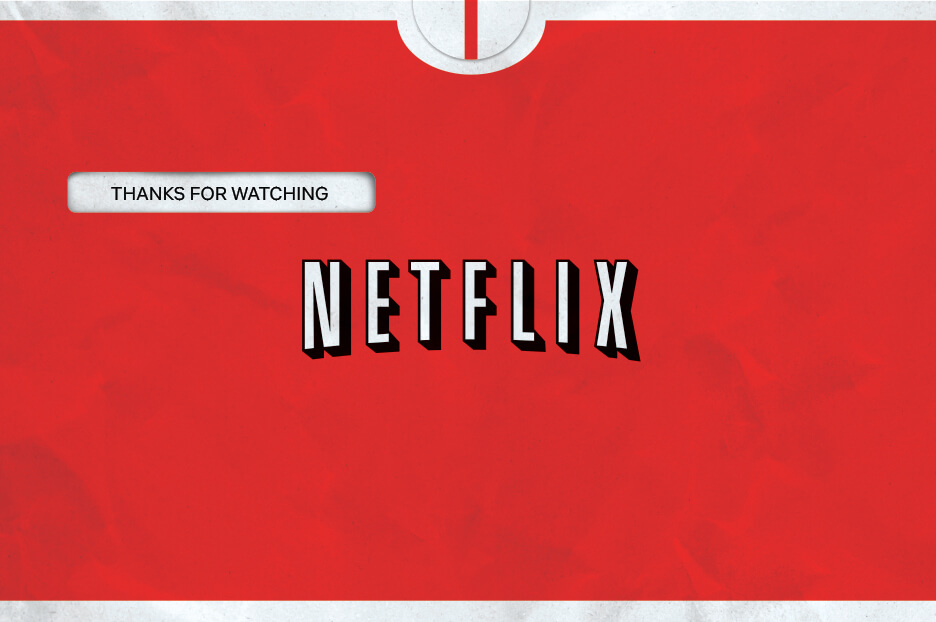
In its First Quarter 2023 Earnings Report, Netflix advised that after 25 years, the DVD.com service is winding down and will officially end as of September 29, 2023. “Our goal,” wrote Ted Sarandos, Co-CEO of Netflix in a press release as well, “has always been to provide the best service for our members. But as the business continues to shrink, that’s going to become increasingly difficult.”
Sarandos notes that the “iconic red envelopes changed the way people watched shows and movies at home, and they paved the way for the shift to streaming.”
Times, they are indeed a-changin’. It seems like only yesterday that the HD DVD versus Blu-ray format war was the talk of the industry and streaming TV hadn’t yet hit mainstream. In reality, it has been 17 years since those two rival disc formats were all anyone could talk about when it came to how we watch movies in the best quality possible at home. It has been 16 years since Netflix introduced its streaming service in 2007, a pie-in-the-sky concept to complement its established DVD rental business. The company expanded to Canada three years later in 2010, and the rest is history.
Who still rents DVDs today? Maybe its customers who can’t afford streaming (and the high-speed Internet required to make it work optimally) or choose not to adopt it for their own personal reasons. Or the elderly who prefer using the “old-school” method of popping a disc into a machine and pressing play. It took them long enough to figure out DVD versus VHS, after all, they aren’t about to endure a tutorial on this complicated technology called streaming now, too!
On the other end of the spectrum, there are individuals who prefer watching content on Blu-ray disc because they believe it’s the best quality you can get. In these such cases, however, the individuals are more likely to buy copies and keep them in a collection for posterity versus rent and send back. What about cottages owners and those who take road trips in RVs? Internet might be spotty or perhaps purposely absent to force you to disconnect, in which case DVDs and Blu-rays are a great option. But these, too, are scenarios where you’ll want to keep a library to watch again and again, not rent and send back.
Add in rising mailing costs not to mention a societal focus on the environment and reducing paper usage, and it’s a no-brainer decision on Netflix’s part to shut down DVD rentals and move ahead full force with streaming.
A Look Back At The Struggles and Triumphs
At the time of its initial launch in 1997, Netflix’s direct-to-consumer model shook up the DVD and Blu-ray rental business. You mean I can relax on the couch and have movies sent directly to me at home? Blockbuster CEO (at the time) John Antioco famously turned down a US$50 million offer to buy the struggling company at one point. Blockbuster was the bee’s knees in DVD rentals back then, but we all know how things turned out for the bricks-and-mortar retailer that was left kicking itself for not reinventing the rental business model itself.
Marc Randolph, Netflix Co-founder recently posted an eye-opening note on LinkedIn about the time he approached Blockbuster in 2000. After the Dot.com bubble popped, he along with Co-CEO Reed Hastings and CFO Barry McCarthy set up a meeting with Blockbuster, with the intention to sell. “Their words were ‘we’ll consider it’ but we could tell they were fighting to suppress laughter,” Randolph wrote.
Netflix, of course, persevered and ended up building an entirely new model that would eventually render Blockbuster obsolete. “Today,” he adds, “the company that Blockbuster could have purchased in 2000 for $50 million has a market cap exceeding $150 billion. And that company with 9,000 stores? Now, it’s just one.” He continues with an important lesson from the story: “If you are unwilling to disrupt your business, there will always be someone willing to do it for you.”
Interestingly, Randolph is taking this very advice to heart and eliminating an aging, likely not profitable, segment of the business to focus more on the one that will yield the greatest opportunities going forward. There are still DVD and Blu-ray holdouts, but the writing is on the wall. Millennials are now 27-42 years old. The DVD generation is done.
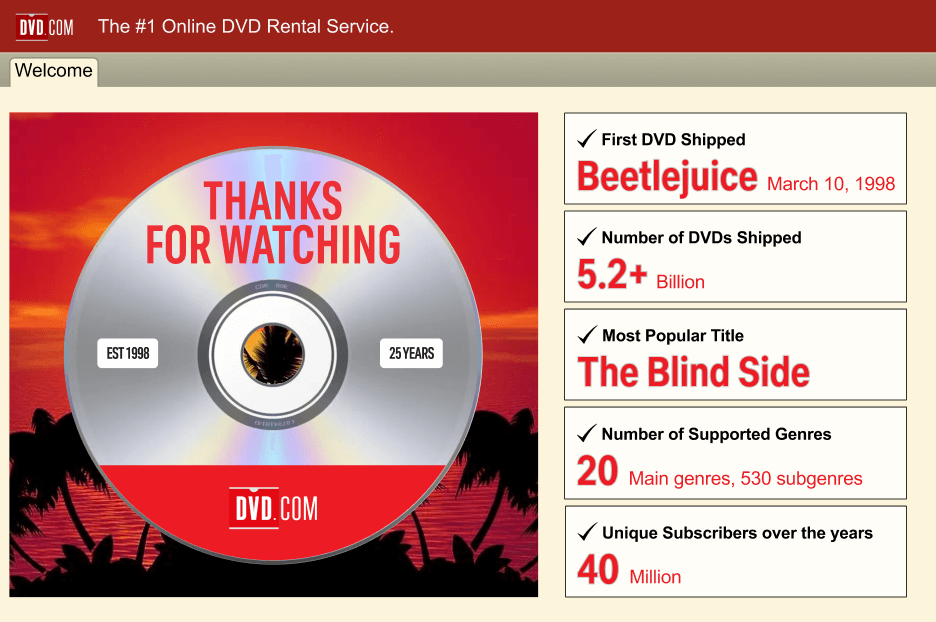
Nostalgically looking back, Netflix notes that the first DVD shipped was a copy of Beetlejuice on March 10, 1998 and The Blind Side was the most popular title overall. In total, Netflix has shipped more than 5.2 billion DVDs, supporting 20 main genres and 530 sub-genres. Through its run, Netflix says it has welcomed 40 million unique subscribers. The company did not release data on what its current subscriber number is. But in its earnings report, Netflix did disclose that its global membership numbers for the core streaming service were up 4.9% to 232.5 million. When it comes to DVD rentals, it was good while it lasted.
We Still Need More Than Streaming
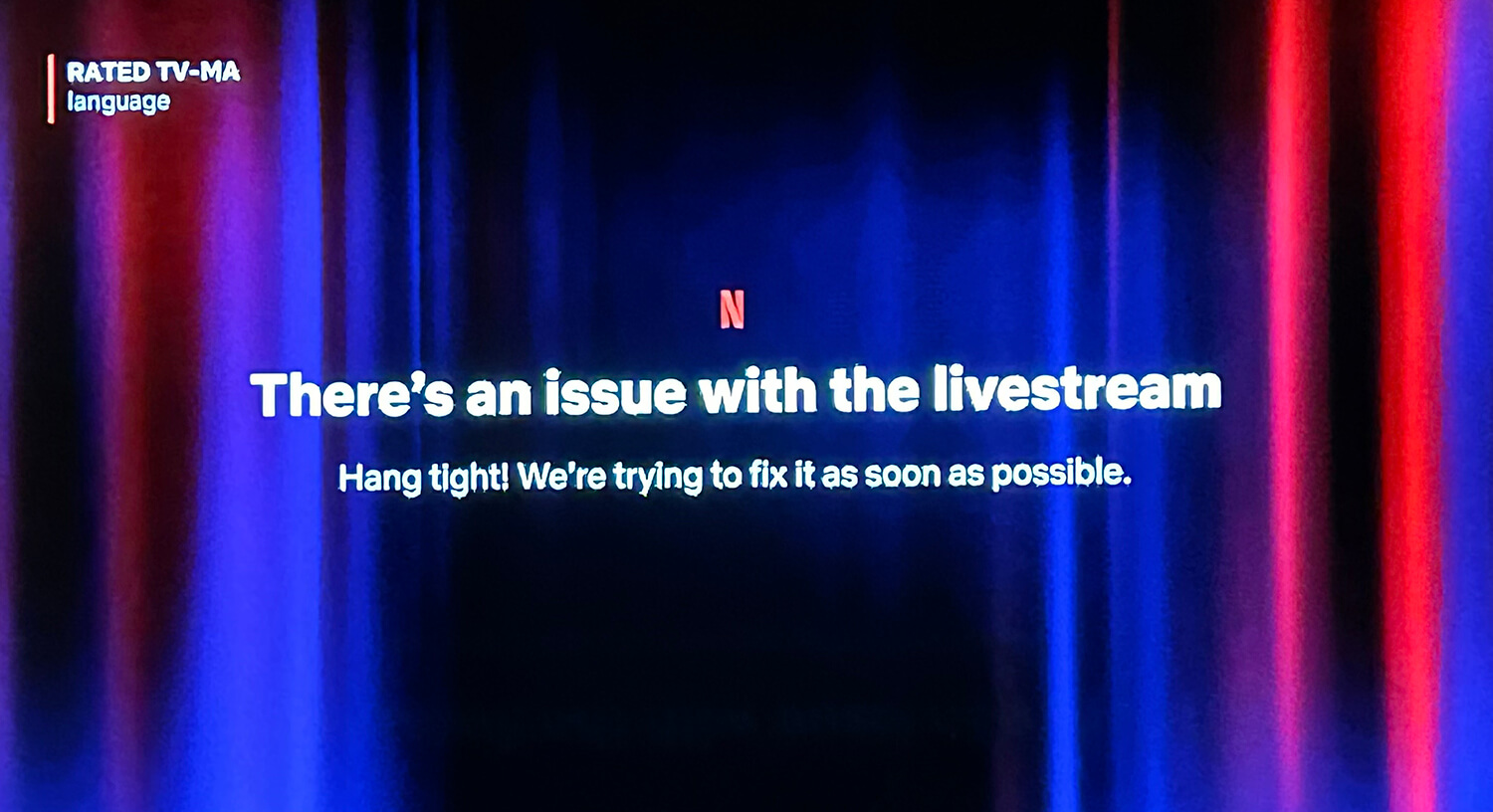
As Netflix focuses all its energy on streaming, including not only facilitating but also producing content, we can revel in this important moment in history. We have gone from rabbit ears to cable to satellite, VHS to DVD, DVD to Blu-ray, pay-per-view to on-demand, specialty channels to apps and finally streaming. Each move has marked a changing of consumer habits. In some cases, our existing habits drove the change. In others, the technology caused us to change. Would you have ever, for example, imagined watching an entire TV show on your phone on the subway?
Some might wonder if this means it’s only a matter of time before networks broadcast their last shows on linear TV and we see a complete shift to streaming? Most networks, after all, already have their own streaming channels anyway.
There’s still a lot of work to be done before this happens. Some, for example, argue that sports, live TV, and local news is what keeps cable TV alive. This isn’t for lack of trying. Recently, Netflix attempted to livestream a reunion show for popular reality series Love is Blind. Due to technical difficulties, fans were left staring at an error screen for more than an hour. Tweets abounded poking fun at Netflix and how poorly the launch went after such a massive build-up of anticipation. That even included Blockbuster, which used the moment to deliver a playful dig on Twitter.
Netflix streamed the live Chris Rock: Selective Outrage stand-up special earlier this year, while Disney+ started livestreaming Dancing With the Stars last year, and for the most part, it has gone off without a hitch.
But it’s the unpredictability, as evidenced by this latest attempt, that leaves fans concerned. Can we trust a streamer like Netflix to deliver the hockey game live and not mess up? Or a live awards ceremony? Netflix has already inked a deal to livestream the Screen Actors Guild Awards starting in 2024, and everyone will be glued to the screens to see how well this works.
Be Kind, Rewind, And Look Forward
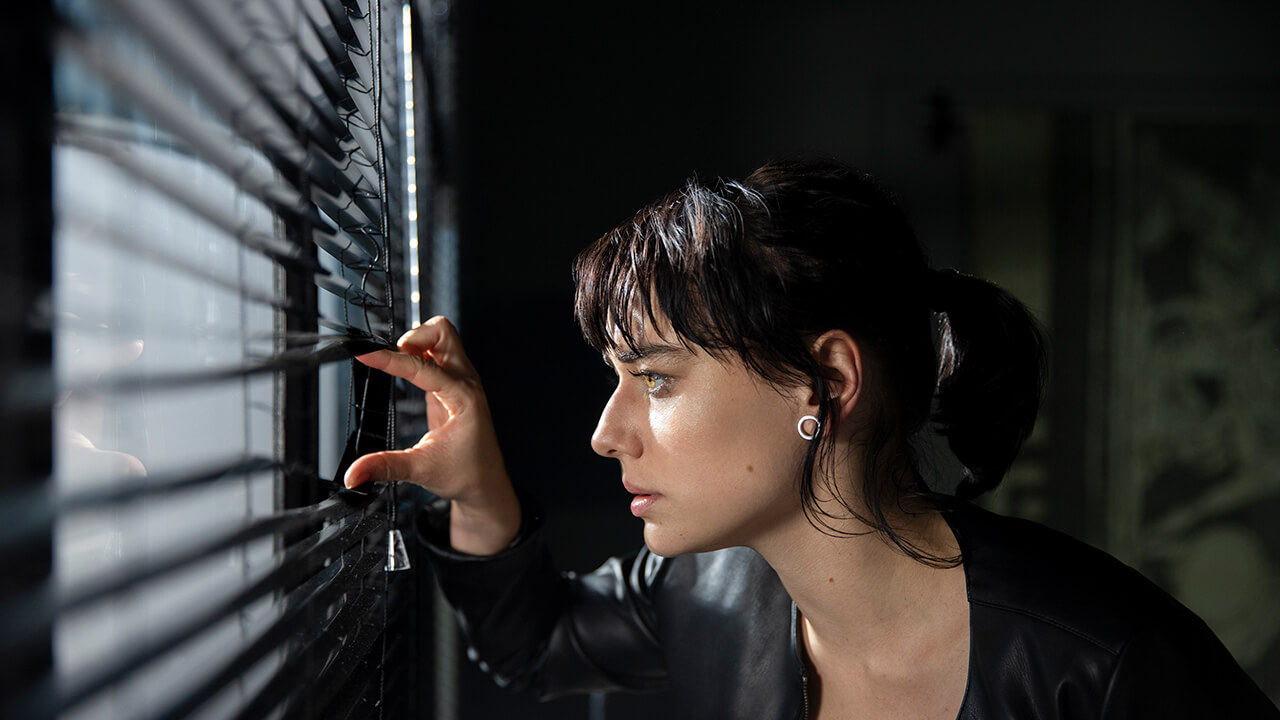
Streaming, specialty linear, channels, cable and satellite, and live TV all remain important elements in the television landscape. But as this move signifies, DVDs and Blu-rays are slowly being phased out, just like VHS was. And we should be ready for what might come next, because the next phase could be sooner than we think.
“We feel so privileged to have been able to share movie nights with our DVD members for so long, so proud of what our employees achieved, and excited to continue pleasing entertainment fans for many more decades to come,” concluded Sarandos.
Maybe one day, Blu-rays will make a resurgence just like vinyl has for music. For now, those iconic red envelopes that arrived in mailboxes like the Consumer’s Digest magazine and CD of the Month club discs of yesteryear, will soon be just a part of television history. Now, the question is: how many of the discs currently in circulation do you think will actually be returned?








